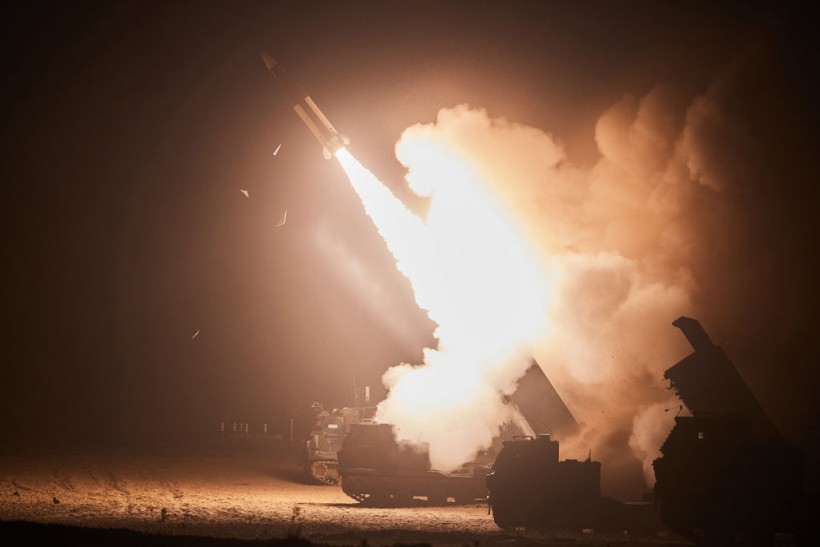The US Air Force has successfully completed testing of its hypersonic AGM-183A Air-launched Rapid Response Weapon (ARRW). This test, conducted on March 17, witnessed the deployment of the hypersonic missile from a B-52H Stratofortress at the Reagan Test Site located in the Marshall Islands.
Hypersonic missiles, capable of surpassing conventional air defense systems with speeds exceeding five times the speed of sound, represent a massive leap in warfare technology.
For some time, the US lacked hypersonic missiles in its arsenal while other global powers like Russia and China have already introduced their iterations.
The completion of testing for the AGM-183A ARRW signifies a crucial advancement for the US military, which has faced mounting pressure to match the technological advancements made by its global counterparts.

(Photo : South Korean Defense Ministry/Dong-A Daily via Getty Images)
EAST COAST, SOUTH KOREA - JUNE 6: In this handout image released by the South Korean Defense Ministry via Dong-A Daily, a missile is fired during a joint training between the United States and South Korea on June 6, 2022 in East Coast, South Korea.
Hypersonic Missile Tests 'Strong Message' from US
The South China Morning Post reports that analysts have suggested that Washington's latest hypersonic missile test sends a strong message to Beijing regarding the United States' commitment to advancing its weapons technology.
With both the US and China actively developing hypersonic weapons and enhancing their defensive capabilities, the geopolitical landscape is witnessing a significant shift in the dynamics of military competition.
China, in particular, has been actively pursuing the development of hypersonic systems, conducting numerous tests in recent years. Reports indicate that China may hold advantages in certain areas of hypersonic technology development, including materials, guidance, aerodynamics, and thermal management.
Furthermore, operational hypersonic weapons systems like China's DF-17 and Russia's Kh-47M2 Kinzhal underscore the increasing significance of hypersonic capabilities in modern warfare.
Earlier this year, Ukraine claimed Russia launched its latest Zircon missile, a sea-based hypersonic missile, for the first time. North Korea is also developing hypersonic missiles capable of targeting US targets. Pyongyang's state media recently revealed that it was successful in testing a solid-fuel engine for a new intermediate-range hypersonic missile.
Read Also: US Army Is Looking Into AI's Potential for Battle Planning Through Starcraft II
The US Catching Up
The Pentagon's slow progress in developing hypersonic capabilities has not gone unnoticed, with critics pointing out the need for expedited advancements.
However, the focus appears to be shifting towards the Hypersonic Attack Cruise Missile (HACM), which offers a smaller form factor and greater flexibility in integration across various aircraft platforms. This shift is reflected in the 2025 financial year budget allocation, which earmarked $517 million for the HACM program.
While the ARRW program may seem to have paused, the data and insights gained from its testing will undoubtedly inform and enhance other hypersonic weapons programs. According to experts, the focus will now shift to the HACM, which is lower in size than the ARRW and hence can be put into smaller aircraft.
The implications of this development extend far beyond military strategy, shaping the contours of geopolitical competition in the 21st century.
Stay posted here at Tech Times.
Related Article: US Air Force Completes Testing of Hypersonic Missile AGM-183A










